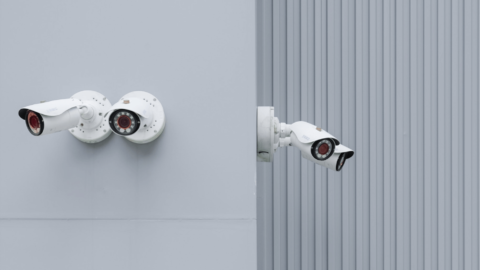Cameras for Video Surveillance
When choosing the ideal camera for video surveillance, you should consider several factors. There is a wide variety of camera types, and here are some of the most popular:
- Bullet Camera – Named for its cylindrical shape, this is a commonly used camera type.
- Dome Camera – It is more vandal-resistant since the cameras are housed in a round protective casing. This camera type is also widespread.
- Fisheye Camera – Equipped with a wide-angle lens, it can capture events from various angles, including 180 and 360-degree panoramic views.
- C-Mount Camera – Features an interchangeable lens, allowing you to adjust distances or field of view.
- PTZ (Pan/Tilt/Zoom) Camera – Offers more flexibility to change the field of view for recording.
- IP Camera – Can connect to the network and can be used with both NVR/DVR systems and cloud-based solutions.
- High Definition (HD) Camera – Provides higher-resolution recordings, ranging from 720p to 4K, enabling improved identification of objects, faces, license plates, and individuals.
- WiFi Camera – Connects wirelessly, offering flexibility. However, you should pay attention to network security and power considerations.
- License Plate Recognition (LPR) Camera – Equipped with built-in LPR technology to identify vehicles.
Choosing the right camera type depends on your specific surveillance needs, location, and budget. Each type has its advantages and is suitable for different scenarios.

The key considerations for cloud video surveillance.
To get the most out of your cloud video surveillance, you should first examine your internet connection. Is it stable and does it have the necessary upload capacity? It depends on the number of cameras and their placement.
To accommodate the need for cameras, an internet connection must be of high quality. The more cameras needed, the better it should be. It is also possible to segment networks to optimize performance. With the spread of 4G/5G, many more locations can access cloud technology.
Recording storage – rules and recommendations
You should consider how long you want to keep your recordings. You should be aware of applicable laws and GDPR regulations, as there are significant global differences and requirements for disclosure, documentation, etc.
In Denmark, this is regulated in the Surveillance Act, including signage, employee information, etc. At the same time, GDPR generally allows for the storage of recordings for up to 30 days.
If, for example, 7 days of recordings are included in a cloud video surveillance package, you may need to purchase additional days if needed.
Therefore, investigate whether you can also store recordings locally and access them through your cloud video surveillance. It’s called edge storage.

How much storage space do you need?
This is closely related to the previous point and is equally important.
If you don’t know, gather data about your existing solution. This will show you how much storage space it occupies on hard drives, storage devices, etc.
With cloud video surveillance, you often have various options for storing recordings. And you can easily expand capacity if needed or if you’ve miscalculated your requirements.
The storage requirement depends on:
- The number of connected cameras
- The resolution they use
- The level of activity in the images throughout the day
- How long you want to retain the recordings
Integration with other systems
In addition to selecting the right camera, it is important to anticipate other needs that may require integration.
This can include access control systems and other building systems. To avoid any potential issues, it is advisable to plan for this before implementing cloud-based video surveillance.